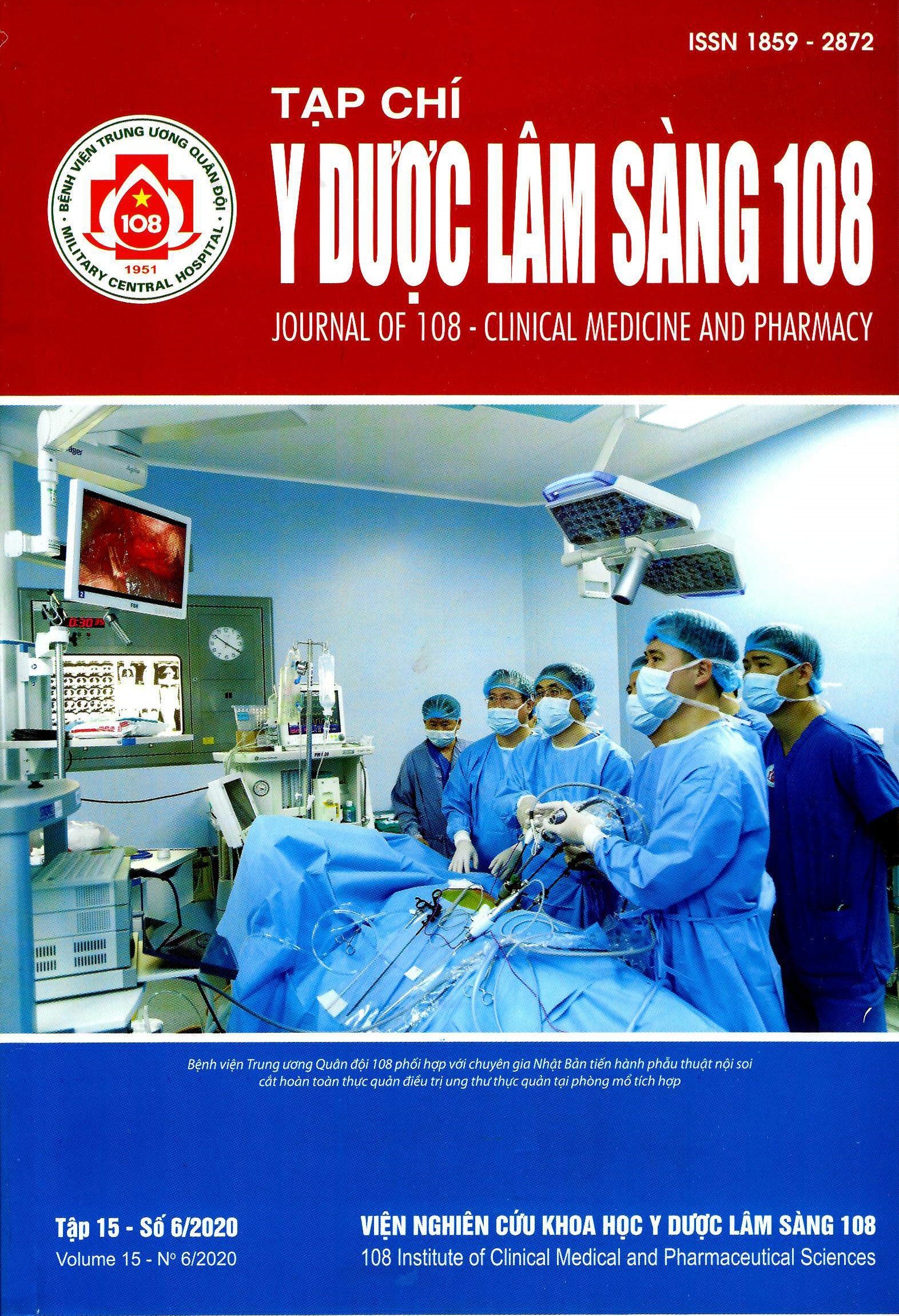The change of serum sodium concentration after percutaneous nephrolithotomy
Main Article Content
Keywords
Abstract
Objective: To evaluate the changes of postoperative serum sodium concetration in patients undergoing percutaneous nephrolithotomy when sorbitol 3% has been selected as irrigation fluid; and to correlate the change with volume of irrigation fluid and the duration of procedure. Subject and method: A prospective study carried out on 100 patients with renal stones larger than 2cm treated by percutaneous nephrolithotomy (PCNL) from December 2013 to December 2016 at 108 Military Central Hospital. Serum sodium concentration were measured before the operation at the first day after the operation. Data analysis was done using SPSS 22.0. Paired T tests were used to compare postoperative serum sodium and their preoperative values. Correlation of the change with total volume of irrigation fluid and the duration of procedure were performed using the Pearson’s correlation coefficient. Result: There was a significant decreased in mean Na+ (137.83mmol/l to 134.41mmol/l) in the first postoperative day as compared to that of the preoperative values (p<0.001). No significant correlation was observed with total volume of irrigation fluid (r = 0.197, p=0.05) and with duration of operation (r = 0.155, p=0.125). Conclusion: This study reveals that there is a significant decreased in Na+ during PCNL in the first postoperative day. No significant correlation was observed with total volume of irrigation fluid and the duration of operation.
Article Details
References
2. Saxena D et al (2019) Effects of fluid absorption following percutaneous nephrolithotomy: Changes in blood cell indices and electrolytes. Urol Ann 11(2): 163-167.
3. Atici S et al (2001) Hormonal and hemodynamic changes during percutaneous nephrolithotomy. Int Urol Nephrol 32(3): 311-314.
4. Dimberg M et al (1993) Absorption of irrigating fluid during percutaneous transrenal lithotripsy. Scand J Urol Nephrol 27(4): 463-467.
5. Feizzadeh B et al (2006) Distilled water as an irrigation fluid in percutaneous nephrolithotomy. Urol J 3(4): 208-211.
6. Khoshrang H et al (2012) Comparative study of hemodynamics electrolyte and metabolic changes during prone and complete supine percutaneous nephrolithotomy. Nephrourol Mon 4(4): 622-628.
7. Koroglu A et al (2003) The effects of irrigation fluid volume and irrigation time on fluid electrolyte balance and hemodynamics in percutaneous nephrolithotripsy. Int Urol Nephrol 35(1): 1-6.
8. Kukreja RA et al (2002) Fluid absorption during percutaneous nephrolithotomy: Does it matter?. J Endourol 16(4): 221-224.
9. Mohta M et al (2008) Haemodynamic, electrolyte and metabolic changes during percutaneous nephrolithotomy. Int Urol Nephrol 40(2): 477-482.
10. Xu S et al (2014) A prospective comparative study of haemodynamic, electrolyte, and metabolic changes during percutaneous nephrolithotomy and minimally invasive percutaneous nephrolithotomy. World J Urol 32(5): 1275-1280.
 ISSN: 1859 - 2872
ISSN: 1859 - 2872
